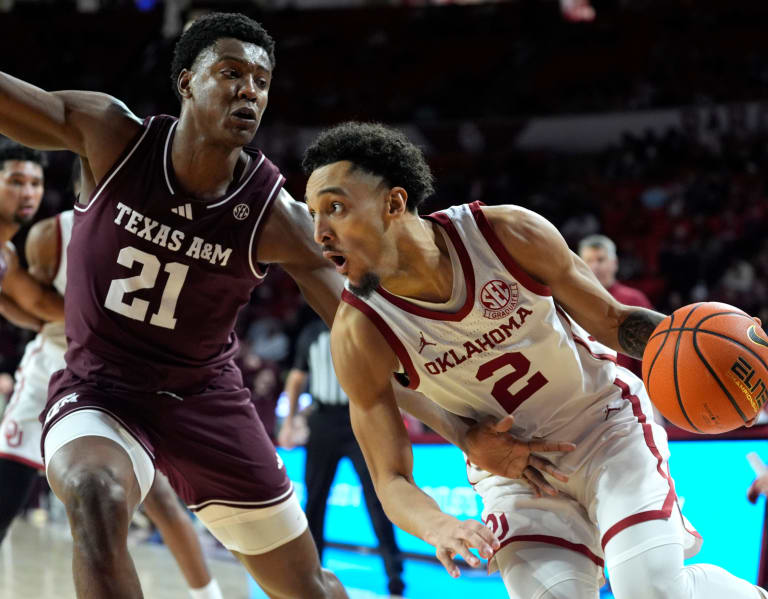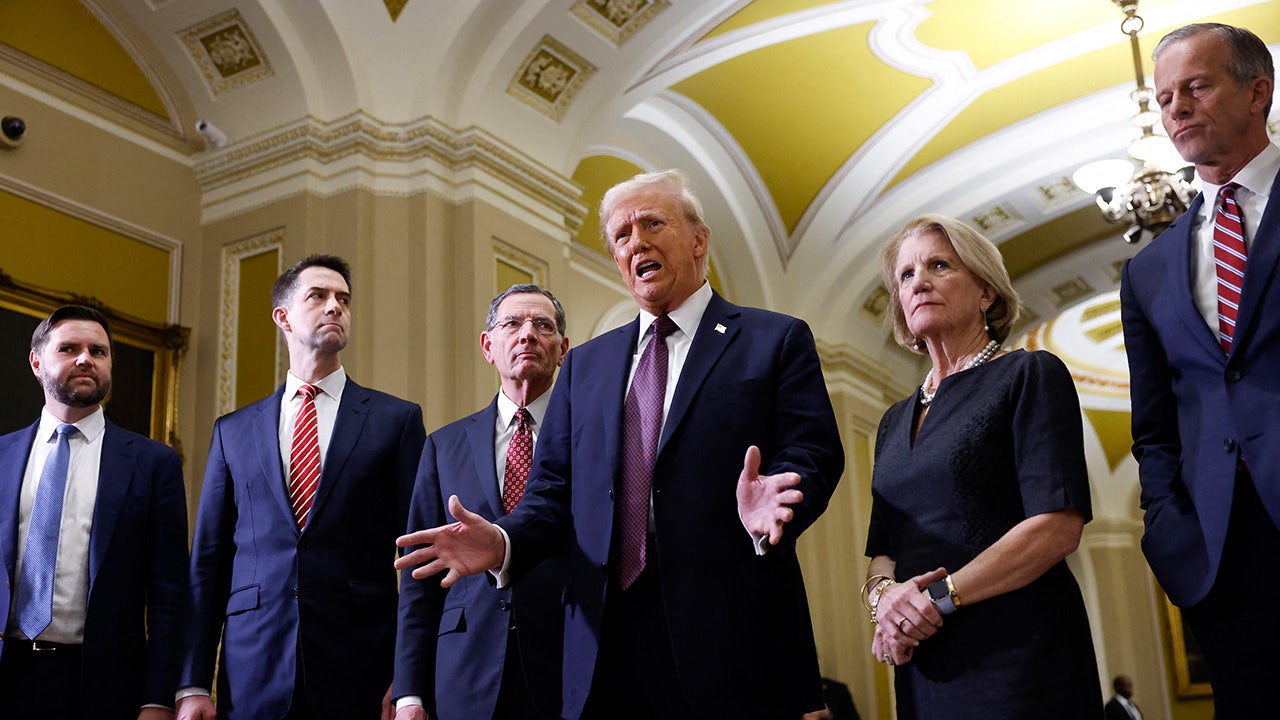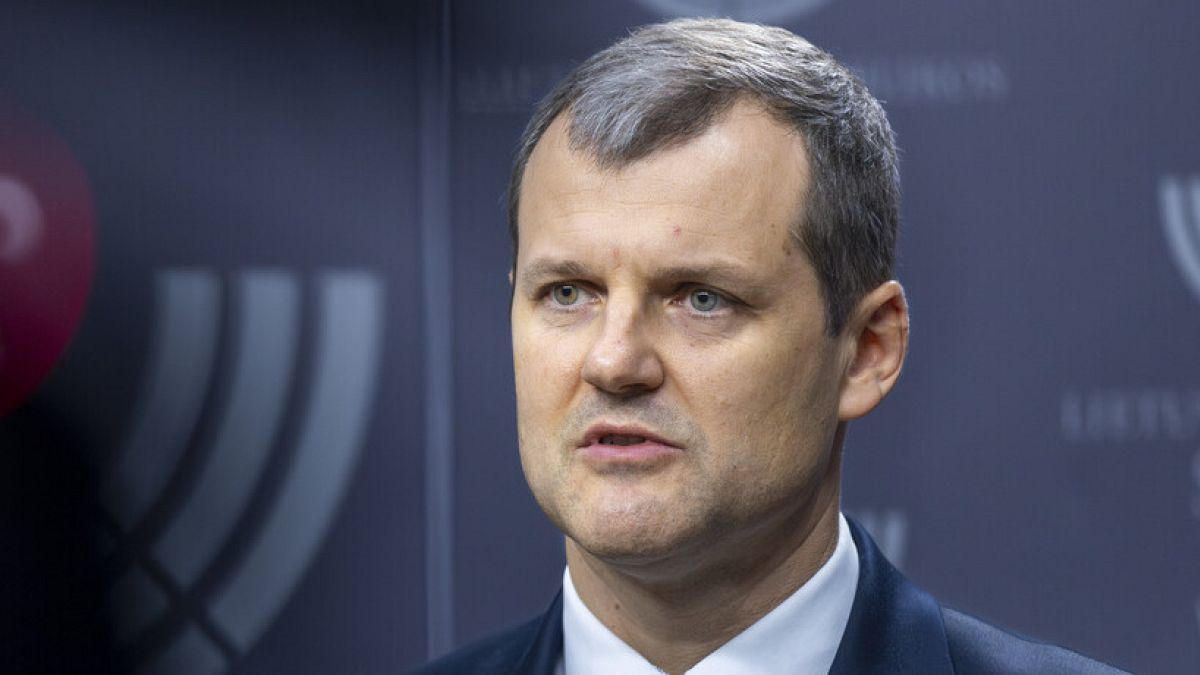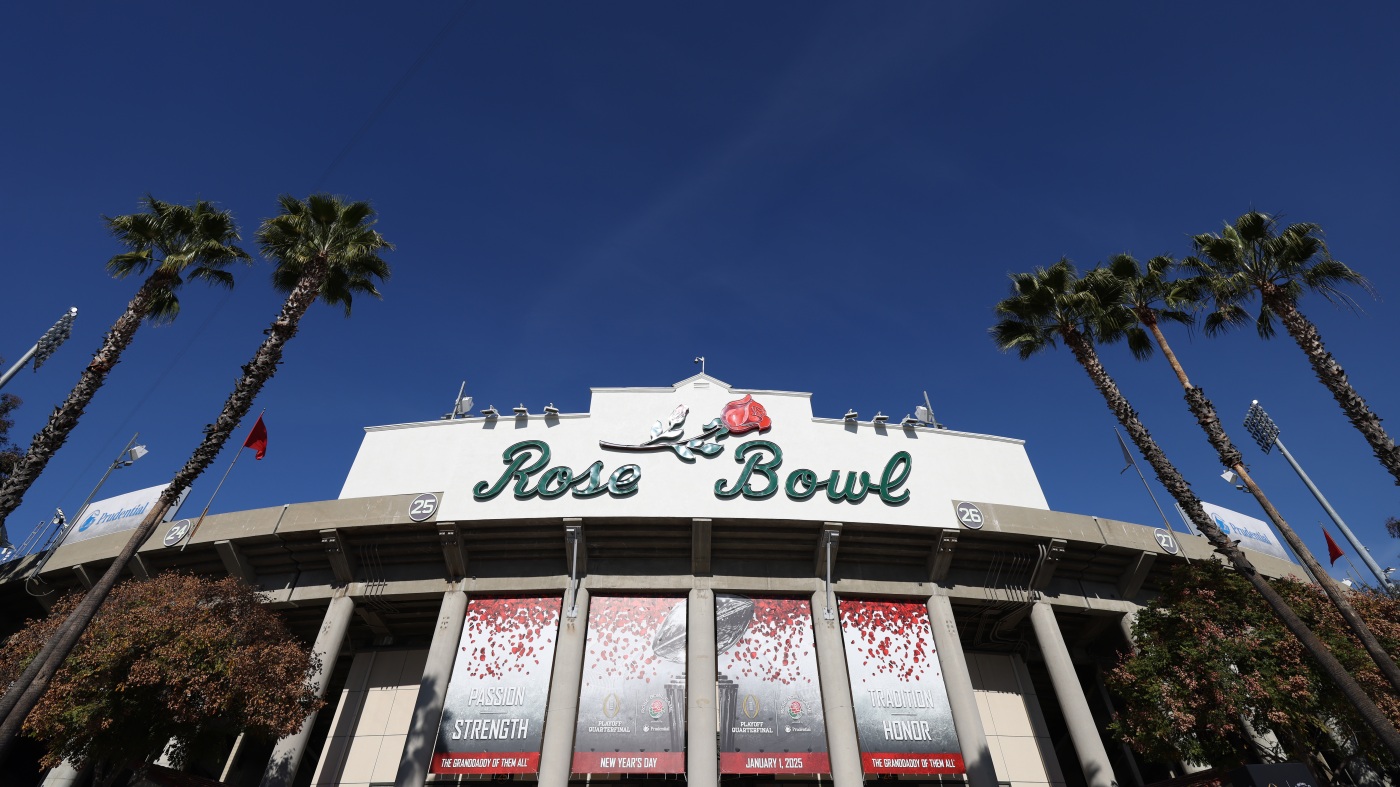New York
De Blasio’s Security Chief Admits Hindering Corruption Investigation

The one-time head of security for former mayor Bill de Blasio pleaded guilty in Manhattan on Wednesday to deleting text messages and refusing to give investigators his cellphone during a probe into Mr. de Blasio’s misuse of city funds.
Howard Redmond, who as an inspector led the New York Police Department’s Executive Protection Unit, had tried to keep the device from the Department of Investigation, which were conducting the probe.
Mr. Redmond, 58, who had been charged by the Manhattan district attorney, pleaded guilty to two felony counts of tampering with physical evidence. He also pleaded guilty to two counts of official misconduct and two counts of obstructing governmental administration, both misdemeanor charges.
“Inspector Redmond engaged in a clear and brazen pattern of obstruction and tampering,” Alvin Bragg, the Manhattan district attorney, said in a statement. “Position and rank do not exempt anyone from cooperating and participating with a law enforcement investigation.”
The political and personal services rendered by Mr. Redmond’s unit were detailed in a Department of Investigation report in 2021 when Mr. de Blasio, a Democrat, had just three months left in office. At the time, Mr. de Blasio, who also had flirted with presidential politics, was considering a run for governor. During his two terms as mayor, he had faced several investigations into his fund-raising. Prosecutors in 2017 raised concerns about his practices, but did not bring criminal charges.
Mr. Redmond, whose unit was assigned to protect the mayor, also became a target for investigators. As part of his plea deal, he had to provide proof that he had left the Police Department, Samantha Dworken, an assistant district attorney, said in court.
“He did not resign or retire, he was fired. The defendant’s obstructive conduct in this case ended his career,” Ms. Dworken said.
He ignored requests from Police Department lawyers and flouted the oversight authority of the watchdog Department of Investigation, she added, calling him “evasive.”
Before Wednesday’s hearing, Mr. Redmond, who wore a blue suit and crisp white shirt, silently strode past about 20 reporters and photographers gathered in the hallway leading to the courtroom. He ignored their questions.
But in court, Mr. Redmond spoke. An apology, and 10 days of community service, were also part of his plea deal.
“I’d like to apologize to the Department of Investigation for not taking their investigation seriously, and not providing them with the information that they needed,” he told Judge Laurie Peterson.
The charges stem from the Department of Investigation’s look at how Mr. de Blasio had used his mayoral security detail for political and personal purposes, including in 2019 when members accompanied him on the presidential campaign trail. Those trips cost the city nearly $320,000, according to the report released by the agency in October 2021.
Investigators tried for a year and a half to obtain access to Mr. Redmond’s texts and encrypted messages, the report said.
Instead, Mr. Redmond had deleted his communications, Margaret Garnett, who then was commissioner of the department, said at a news conference after the report was released. When Mr. Redmond was told to surrender his cellphone, he tried to destroy the device, she said.
Mr. Redmond “sought to thwart this investigation,” the report said. Ms. Garnett told reporters she had referred Mr. Redmond’s conduct to the district attorney’s office for a criminal investigation into obstruction of justice.
On Wednesday, Louis La Pietra, Mr. Redmond’s lawyer, said his client has acknowledged his mistakes, “and for those mistakes he’s paid a great price.”
His unceremonious dismissal was “the ultimate humiliation for a police officer” who had worked for the force about 30 years, said Mr. La Pietra.

New York
Carole Wilbourn, Who Put Cats on the Couch, Dies at 84

Carole Wilbourn, a self-described cat therapist, who was known for her skill in decoding the emotional life of cats, as confounding as that would seem to be, died on Dec. 23 at her home in Manhattan. She was 84.
Her death was confirmed by her sister Gail Mutrux.
Ms. Wilbourn’s patients shredded sofas, toilet paper and romantic partners. They soiled rugs and beds. They galloped over their sleeping humans in the wee hours. They hissed at babies, dogs and other cats. They chewed electrical wires. They sulked in closets, and went on hunger strikes.
They suffered from childhood trauma, low self-esteem, anxiety, depression, jealousy and just plain rage. And Ms. Wilbourn, who was self-taught — in college she had studied (human) psychology and majored in education — seemed particularly attuned to the inner workings of their furry minds. A minor Manhattan celebrity, she was often called the kitty Freud, or the mother of cat psychiatry.
Cats hate change, she often noted. Even a new slipcover on the sofa can undo them. Cats are selfish. Unlike dogs, who strive to please their master, a cat strives to please itself. To mangle a cliché, happy cat, happy (human) life.
“A cat behaves badly when it’s trying to communicate,” she told The Los Angeles Daily News in 1990. “It’s sending an SOS. It’s saying, ‘Please help me.’”
Ms. Wilbourn developed her specialty over a half-century after founding The Cat Practice, billed as Manhattan’s first cats-only hospital, in 1973 with Paul Rowan, a veterinarian. She said she was the first feline therapist in the country, a claim that is not known to have been disputed.
She was the author of six books, including “Cats on the Couch” (first published in 1982), which offered case studies to help cat lovers better understand their furry friends. She treated patients as far away as Australia and Turkey (by phone), and made house calls as far away as Maui.
“Cats have emotions,” she said. “They get happy and sad and frustrated, and, since I understand emotions in people, I understand them in cats.”
She estimated that she had treated some 13,000 cats, and claimed a success rate of 75 to 80 percent. Take Snoopy, who didn’t like to be held and played rough when he was, and ran around in circles if he was over-excited. Sobriety, a 3-year-old tabby, scratched her own skin raw. Minina bit all visitors, and had to be locked away during dinner parties. Ms. Wilbourn’s diagnosis? Single cat syndrome. The treatment? Another cat, preferably a kitten; lots of attention, but not to the kitten; and, in Sobriety’s case, Valium.
She once treated a cat with Reiki energy healing after it had accidentally been run through the dryer.
Ms. Wilbourn’s go-to prescriptions also included New Age and classical music, recordings of whale songs and an abundance of treats, like catnip (a natural antidepressant, she pointed out). She also suggested canny behavior modifications by the humans, like having a new romantic partner feed the cat. She often recommended, in the days of landlines and answering machines, that humans call their pets and leave them cheerful messages. Her services did not come cheap. House-visits in Manhattan hovered at $400.
“If I lived anywhere besides a big city like New York,” she told The New York Times in 2004, “I’d be on food stamps.”
Carole Cecile Engel was born on March 19, 1940, in the Flushing section of Queens, one of four children of Harriet (Greenwald) and Gustave Engel, a taxi driver. There were no cats in their Queens apartment, but the family did have a canary named Petey. Carole graduated from Bayside High School and attended Albany State University’s School of Education before transferring to New York University, where she studied psychology and earned a Bachelor of Science degree in business education in 1964.
Her first cat was a part-Siamese named Oliver, whom she adopted through an ad in The Village Voice. She was working as a substitute teacher and a Playboy bunny before opening The Cat Practice with Dr. Rowan, whom she later married.
“She was very attuned to the animals, to their emotional states,” Dr. Rowan said in an interview. “It was very unusual for the time.” As a result, their business flourished.
An earlier marriage to David Wilbourn, a photographer, ended in divorce, as did her marriage to Dr. Rowan. In addition to Ms. Mutrux, her sister, she is survived by Orion 2, a Siamese.
Ms. Wilbourn was a dog lover too, and on occasion treated canines, though she never had a dog herself. But she had definite views about anti-cat people. In her experience, she said, some of those who claimed they were allergic to cats often just didn’t like them.
“A cat is a free spirit and will not be subservient,” she wrote in “The Inner Cat” (1978). “People who derive their gratification from giving commands that others must obey can be threatened by a cat. It’s hard to assert your sense of power over a cat.”
New York
Port Workers Could Strike Again if No Deal Is Reached on Automation

Ports on the East and Gulf Coasts could close next week if dockworkers and employers cannot overcome their big differences over the use of automated machines to move cargo.
The International Longshoremen’s Association, the union that represents dockworkers, and the United States Maritime Alliance, the employers’ negotiating group, on Tuesday resumed in-person talks aimed at forging a new labor contract.
After a short strike in October, the union and the alliance agreed on a 62 percent raise over six years for the longshoremen — and said they would try to work out other parts of the contract, including provisions governing automated technology, before Jan. 15.
If they don’t have a deal by that date, ports that account for three-fifths of U.S. container shipments could shut, harming businesses that rely on imports and exports and providing an early test for the new Trump administration.
“If there’s a strike, it will have a significant impact on the U.S. economy and the supply chain,” said Dennis Monts, chief operating officer of PayCargo, a freight payments company.
The union is resisting automation because it fears the loss of jobs at the ports. President-elect Donald J. Trump lent his support to the union’s position last month. “I’ve studied automation, and know just about everything there is to know about it,” he said on his website Truth Social. “The amount of money saved is nowhere near the distress, hurt, and harm it causes for American Workers, in this case, our Longshoremen.”
But figures close to Mr. Trump, like Vivek Ramaswamy, who the president-elect says will co-head an agency that will advise his administration on slimming down the government, have been critical of the union. In October, Republicans in Congress called on President Biden to use the Taft-Hartley Act to force striking longshoremen back to work.
And while the maritime alliance has agreed to a hefty raise, it may not be as ready to compromise on technology. Employers say that the technology is needed to make the ports more efficient and that they want the new contract to give them more leeway to introduce the sort of machinery that the union opposes.
To prepare for the potential closing of East and Gulf Coast ports, businesses have accelerated some imports, delayed others and diverted some to West Coast ports, said Jess Dankert, vice president for supply chain at the Retail Industry Leaders Association, which represents many businesses that import goods.
“Contingency plans are pretty well developed,” she said, but added that a strike of more than a week would have significant ripple effects that could take a while to disentangle.
The International Longshoremen’s Association declined to comment.
The cost of shipping a container has risen over 60 percent on average in the past year, in large part because attacks on shipping in the Red Sea have forced ocean carriers to travel a longer, more expensive route and use more vessels. And if the East and Gulf Coast ports close, some carriers recently said, they will add surcharges to shipping rates for containers destined for the ports.
In earlier negotiations, the union secured a deal that would increase wages to $63 an hour, from $39, by the end of a new six-year contract. With shift work and overtime, the pay of many longshoremen at some East Coast ports could rise to well over $200,000 a year. (At the Port of New York and New Jersey, nearly 60 percent of the longshoremen made $100,000 to $200,000 in the 12 months through June 2020, the latest figures available, according to data from an agency that helped oversee the port.)
But to get those raises, the union will have to reach a deal on the rest of the contract, including new provisions on automation.
The core of the technology dispute concerns “semi-automated” port machinery that does not always require the involvement of humans. At the Port of Virginia, humans operate cranes that load containers onto trucks, but the cranes can also arrange huge stacks of containers on their own.
The last labor contract allowed for the introduction of semi-automated technology when both parties agreed to work-force protections and staffing levels. But in recent months, leaders of the International Longshoremen’s Association criticized port operators’ use of semi-automated technology, contending that it will lead to job losses.
“Now, employers are coming for the last remaining jobs under the shiny banner of semi-automation,” Dennis A. Daggett, the union’s executive vice president, wrote in a message to members last month.
The employers want the new contract to let them introduce more technology. In a statement to The New York Times last month, the maritime alliance said it was committed to keeping the job protections in place, but added, “Our focus now is how to also strengthen the ability to implement equipment that will improve safety, and increase efficiency, productivity and capacity.”
Even with automation, hiring of longshoremen has gone up at the Port of Virginia, according to union records. An increase in the number of containers the port handles is largely behind the increase in hiring.
“The Port of Virginia is thriving with automation,” said Ram Ganeshan, professor of operations and supply chain at William & Mary in Williamsburg, Va. “They’re not mutually exclusive.”
Some labor experts said there was a model for compromise: The union could agree to more automation, and the employers would offer solid job guarantees.
The International Longshore and Warehouse Union, which represents dockworkers on the West Coast, agreed to a contract over a decade ago that “recognized that the introduction of new technologies, including fully mechanized and robotic-operated marine terminals, necessarily displaces traditional longshore work and workers.” The union got guarantees that its members would maintain and repair the machinery at the terminals.
Harry Katz, a professor at Cornell University’s School of Industrial and Labor Relations, said a deal on the East and Gulf Coasts was possible in part because the employers were profitable enough to offer job guarantees. “I do expect a compromise,” he said.
New York
Fear on the Subway: Perception and Reality

Good morning. It’s Wednesday. Today we’ll look at the perceptions and the realities of crime in the subway. And, because it’s the first day of the state legislative session, we’ll look at the colonial-era lawyer who compiled a book of state laws when state government was brand-new.
Last year ended and 2025 began with a disturbing torrent of incidents in the subway: a woman burned to death on a subway car that was parked at the end of the line in Brooklyn, a man stabbed to death on a train in Queens and at least three other attacks.
Each heightened the perception that the subways are unsafe.
Mayor Eric Adams and Jessica Tisch, the police commissioner, used the word “perception” seven times in a briefing on citywide crime statistics on Monday. “The subways will always be a bellwether for the perception of public safety in New York City,” Tisch said. “Declining crime numbers are significant, but we must still do more because people don’t feel safe in our subways.” Later the mayor said: “It is clear perception always overrides reality.”
I asked Andy Newman, who covers homelessness and poverty in New York — and used to cover transportation — to talk about the perception and reality of recent crimes in the subway.
The crime figures that Adams and Tisch released echoed a New York Times analysis of M.T.A. and police statistics from 2022, which showed that the chance of being a victim of violent crime in the subway was remote — roughly the same as the chance of being injured in a car crash during a two-mile drive. Why does the subway seem scarier?
People in cars tend to feel like the car itself is protecting them from external threats — it’s like you’re driving around in a little tank. I know, so is everyone else, but fear is not a rational thing.
In the subway, it’s just you, whoever else is there, and a train that weighs about 600 tons (not counting the passengers) barreling in.
And a subway car is a confined space where there may be no easy way to escape danger. That can make people feel trapped and vulnerable, which is scary.
Statistically, violent crime in the subway has seesawed in the last few years. But hasn’t there been an increase in several important categories, and doesn’t that go back to before the pandemic?
Yes, compared with before the pandemic, the number of murders in the subway has been higher in the last few years, though it has fluctuated a bit. Incidents of people getting pushed to the tracks have also risen, and the rate of felony assaults is more than double what it was before the pandemic. Misdemeanor assaults in the subway have also increased, though not as much. Robberies, for what it’s worth, have not.
So the perception that the city is less safe, or unsafe, is a lingering consequence of the pandemic?
A lot of people think that something changed during the pandemic and that there were suddenly more homeless people with untreated mental illness on the streets or in the subways.
People with serious mental illness are more likely to be the victims of crime than the perpetrators. But there is a certain percentage of psychotic people who are capable of lashing out.
Some of this may be due to a drop in the number of psychiatric beds in hospitals, but no one knows for sure.
There was a point at the height of the pandemic when paid ridership on the subway had plummeted and homeless people — who were avoiding shelters because they didn’t want to get sick — made some of the trains seem like rolling encampments. That’s no longer the case, but the perception is that things never quite went back to what they were before.
One transit advocate you talked to said that the M.T.A. has poured so many resources into stopping fare-beating. Would the subways be safer if there were more police officers and M.T.A. personnel on the platforms, instead of at the turnstiles?
It’s hard to say.
People have been pushed to the tracks even when police officers were patrolling on the platform but were not close enough to stop the attack. It takes only a second to push someone off the platform.
The police seem to believe that the people who habitually jump turnstiles are more likely to go on to commit more serious crimes once they’re in the subway system, so keeping them out prevents serious crime. But the police cannot be everywhere. It’s very hard to keep someone out if they want to go in.
Weather
Expect sunshine and wind gusts with temperature in the upper 20s. For tonight, look for partly cloudy skies with temperatures in the low 20s.
ALTERNATE-SIDE PARKING
In effect until Jan. 20 (Martin Luther King Jr. Day).
The latest New York news
In 2266, will anybody remember what state lawmakers do this year?
Today is the first day of the state legislative session in Albany, the first official workday for the Assembly and the State Senate.
In 2266, 242 years from now, will anyone still be talking about the laws they pass?
That question came to mind when Peter Klarnet, a senior specialist in Americana at Christie’s, picked up “Laws of the State of New York,” published 242 years ago, a compendium of actions taken by “the first session of the Senate and Assembly after the Declaration of Independence.”
It turned out that Klarnet was less excited about the book than about what he had found inside, a handwritten copy of the Declaration of Independence, apparently the only manuscript copy in private hands. Christie’s plans to sell it in on Jan. 24. The presale estimate is $2 million to $3 million.
The manuscript was written by Samuel Jones, who had compiled “Laws of the State of New York” with another colonial-era New Yorker, Richard Varick. Their names live on — Jones’s in Jones Beach on Long Island and Great Jones Street in NoHo, and Varick’s on Varick Street in Lower Manhattan.
Klarnet said Jones’s legacy also included proposing compromise wording that broke a deadlock over the Bill of Rights and cleared the way for New York to ratify the federal Constitution. New York’s state Constitution was the only one that originally began with the Declaration of Independence; Jones apparently wrote out the manuscript that Christie’s is selling to take to the state’s ratification convention in 1788.
Looked at from the polarized 2020s, the back story of comity and compromise seems improbable: Jones had been a British loyalist during the Revolutionary War. But after the British surrendered, he became an ally of the state’s first governor, George Clinton, who had been on the side of the colonials as a brigadier general in the state militia.
The copy of “Laws of the State of New York” that Christie’s is selling has notes by Jones in the margin about laws that had been revised or repealed into the 1790s. He had been elected to the Assembly in 1786 and the State Senate in 1790, and in 1797 was appointed the state’s first comptroller.
So what about that question — the one about whether laws passed in this legislative session will be remembered 242 years from now?
I asked the current comptroller, Thomas DiNapoli.
“I hope you’re not thinking about congestion pricing,” he said, laughing.
Dear Diary:
On the train in Brooklyn,
a lady stood facing the doors.
She s-l-ow-l-y extended her front leg
in an elegant line
and pressed her toe into the ground
with purpose.
The toe lightly tapped
and tapped again.
The movement caught my eye — a dancer!
Gemstone-studded ballroom heels
peeked out of her “The Heart of NY” tote.
With front leg extended,
she lightly flicked the leg upward in a tango kick,
silently dancing on the way home.
— Sarah Jung
Illustrated by Agnes Lee. Send submissions here and read more Metropolitan Diary here.
Glad we could get together here. See you tomorrow. — J.B.
P.S. Here’s today’s Mini Crossword and Spelling Bee. You can find all our puzzles here.
-

 Business1 week ago
Business1 week agoThese are the top 7 issues facing the struggling restaurant industry in 2025
-

 Culture1 week ago
Culture1 week agoThe 25 worst losses in college football history, including Baylor’s 2024 entry at Colorado
-

 Sports1 week ago
Sports1 week agoThe top out-of-contract players available as free transfers: Kimmich, De Bruyne, Van Dijk…
-

 Politics6 days ago
Politics6 days agoNew Orleans attacker had 'remote detonator' for explosives in French Quarter, Biden says
-

 Politics6 days ago
Politics6 days agoCarter's judicial picks reshaped the federal bench across the country
-

 Politics4 days ago
Politics4 days agoWho Are the Recipients of the Presidential Medal of Freedom?
-

 Health3 days ago
Health3 days agoOzempic ‘microdosing’ is the new weight-loss trend: Should you try it?
-

 World1 week ago
World1 week agoIvory Coast says French troops to leave country after decades














